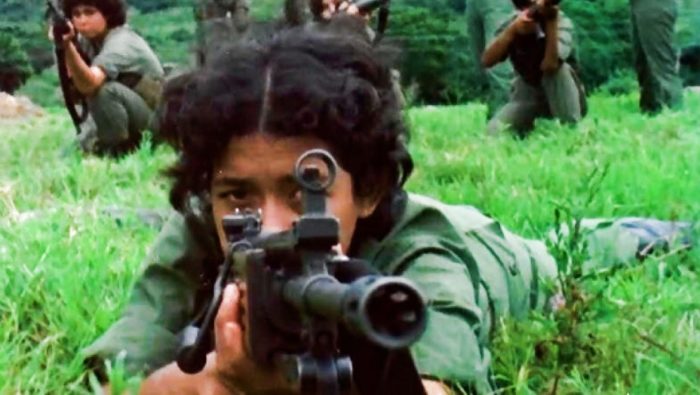
By La Virgen
Memory can be tricky. As time passes bigger chunks are lost, stories have less details, and soon enough the story is buried. Historical memory mimics this on a larger scale with important events and figures becoming forgotten and buried within the history books – with all that’s left being recycled quotes circulating around the internet. Within the US, little is known about the current situation in Nicaragua, it’s cultural significance regarding Daniel Ortega, the rising number of political dissenters detained, or the tumultuous past that led to this point. Additionally, atrocities including femicide and rape are occurring in Nicaragua within a legacy of patriarchal oppression against women; including during the revolution within the FSLN (Sandinista National Liberation Front).
¡Las Sandinistas! directed by Jenny Murray, highlights the intersecting lives of women who became active militants within the FSLN before the eventual dissolution of the Somoza dynasty and during the US backed Contra war after the Sandinista revolution. Among the many women interviewed are Lea Guido, Dora María Téllez, Mónica Baltodano, Claudia Gordillo, Sofía Montenegro, Margarita Montealegre, Gioconda Belli, and Daisy Zamora. Under the brutal dynasty of the US backed Somoza family, which began in 1936, who unsurprisingly enriched themselves while the country remained impoverished. Leading up to the revolution, the women became radicalized and participated in local actions, joined the guerrillas in the mountains, participated in ransoms, and played pivotal roles during the FSLN uprising. Dora María Téllez was only 22 when she led the victorious occupation of Leon, one of the major cities in Nicaragua. Each woman describes from their personal story a collective feeling of excitement, fear, bravery and admiration for each other. Their stories are conjoined with personal photos from the period and never before seen archival footage.
Yet, as victorious they were, the women after the revolution were still dismissed and disregarded as important figures in the movement. Whether it was Daisy Zamora being hit on or Dora Téllez being asked to turn down a powerful position within the newly formed FSLN government – patriarchal practices of the men in the revolution were for the most part ignored along with any broader analysis of women’s issues. This isn’t something specific to the FSLN, as the US Chicanx and Black Panther movements encountered similar dynamics of women’s issues seen as either secondary or a separate issue to be dealt with at another time.
The film is not only a historical documentary of the Sandinista revolution but an incredibly important piece of feminist history that remains relevant today. How long have these women’s stories been buried? First hand accounts by women participants illustrate how important woman were to the revolution and rebuilding society. Many of the women are still politically active to this day and some being recently detained by the Ortega regime (such as Sofía Montenegro and Mónica Baltodano who have since been released). The memory of these women and their role should not be obscured out of our collective memory by the patriarchal figures who have reaped the benefits of bearing their involvement in the FSLN. Especially this applies to current Nicaraguan president Daniel Ortega, who was accused of rape by his step-daughter Zoilamerica Narvaez and has faced major backlash after neo-liberal social security reforms sparked a months long protest movement beginning in April 2018. Since then, over 300 people have died and hundreds detained at the hands of the state in efforts to silence them from speaking out against Ortega and his blatant attacks on indigenous and working class Nicaraguans. Additionally, Ortega has faced criticism for his strict anti-abortion laws, even in cases which jeopardize the mother’s life, and land seizures.
With the help of hashtags like #SOSNicaragua and constant communication via Twitter and other platforms, the crisis in Nicaragua is gaining attention from a worldwide audience. This is why ¡Las Sandinistas! is so important; it shows the legacy of fierce women, historical background into understanding current events as well as the necessity to incorporate feminism in national discourse.
If you are looking to read more on Nicaragua and the recent uprising we recommend “One Million Hands Flourishing” by Tanya H.F. and “It’s No Longer About Social Security: Inside the Nicaraguan Student Protests” and “A Door Has Been Opened: Nicaragua’s April 19 Uprising” by Miranda de las Calles. For more detailed political analysis of we recommend “Capitalist Development in Nicaragua and the Mirage of the Left.”
